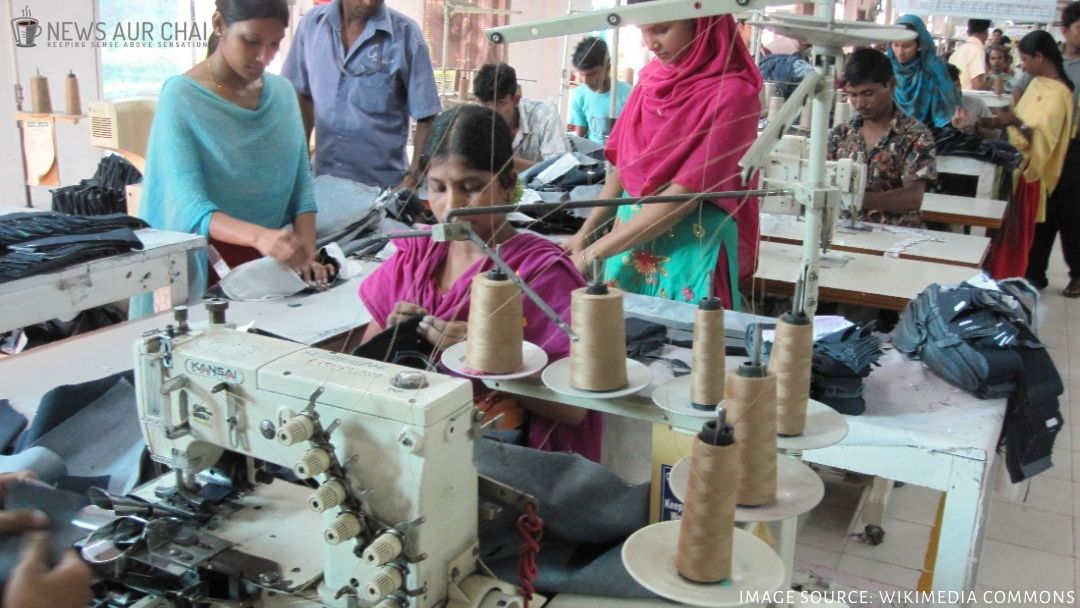Fashion: Behind The Scenes – Pandemic Edit

When it comes to making profits, business conglomerates look for alternative approaches to make the most by compromising on various levels of the supply chain — which knowingly or unknowingly constitute the lives of the workers as well. The fashion world is presumptuously darker than it seems and no different than other business in exploiting the vulnerable in reaping fruits at the cost of lives and quality.
The hearty profits which fill the pride and pocket of humongous global retailers and the low-priced apparel that consumers wear are at the verge of the penny wage and exploitation sustained by these workers in various developing countries.
In these challenging times of pandemic, according to Bloomberg reports, orders worth approximately 1.5 billion dollars have been cancelled in around 1,089 garment factories in Bangladesh. Likewise in June one of Karnataka’s oldest garments manufacturers, Gokaldas Exports, which supplies clothing to GAP, H&M, Reebok and Adidas among others, was shut down, leaving 1,300 garment workers suddenly unemployed. According to a report by India Tv News, the trade union officials in Bangalore said that, “they were not given any notice ahead of the shutdown”.
The world today is enveloped under the uncertain times of the pandemic. Still, irrespective of such pressing times, the world of fashion has always sidelined the important issues perpetrating beneath the covers of glamour. From exploiting the environment by the fast fashion fad to building brand empires by waging the low workers from the developing countries, the fashion world has registered its name in every form of exploitation.
It is no hidden fact that garment workers carve out the branded clothes and designs shining in the runways in countries like India and Bangladesh in the grimmest working condition. With low income, no job security, no health care facilities, no fixed working hours — the workers often end up working overtime, avoiding the repercussions on their health to make some extra money.
According to a study by the University of California, the Indian garment sector employs more than 12 million people in factories but millions more work from home.
Brands such as Dior, H&M, often work on contractual bonds in factories in developing countries for various stages of garment production from segregating fabrics to cutting to stitching, embroidery to finishing the product. All this is designed by workers hired on low wages short term basis; the situation is worse for female garment workers who are also vulnerable to gender-based violence and harassment in an atmosphere where there is no check and balances for the well-being of the workers and no space for any redressal for abusive and unfair conditions.
A report by Global Labor Justice stated that “Across Asia, women garment workers make up the vast majority of the total workers behind the fashion Industry. In Bangladesh, Cambodia, Indonesia, and Sri Lanka, women workers represent between 80 and 95 per cent of the garment workforce. In India, women account for between 60–75 per cent of the garment workforce.
According to a report centred on India’s home-based workers reflected that the women and young girls more vulnerable to such circumstances are mostly from marginalised or minority communities.
The consciousness of the brands may or may not be awakened, but there is an ongoing practice of environment, social as well as economic sustainability. But preaching stands hollow and superficial till they find a stand on ground. Keeping lives and environment in danger and harbouring social injustice, the brands are making into the business league.
It is high time that brands awaken their consciousness and look out for upgrading and formalisation methods of the supply chain including contractual bonds, forming committees to address the issues faced by the workers and tackle exploitative practices; managing income and providing job security to the workers.






One Comment